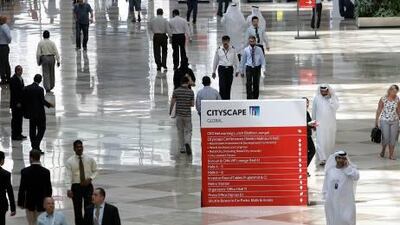First-time buyers used to be everywhere. You would see them bouncing on the beds and sofas at IKEA of a weekend in their dungarees. They were pests, frankly.
But to be fair to them, the Futon fodder have always kept things going. They form the foundation upon which every property cycle is built. Without them, the market is like a billy bookcase missing an Allen key. If this first layer of the property pyramid is not being constantly replenished, then everything quickly seizes up. Like squaddies in the army, we expect them to clamber pluckily over the top first, before we think about sticking our own heads above the parapets.
All the young dudes with everything before them cannot afford to buy homes any more. Without them, all the oldies with everything behind us cannot make money any more. It is very inconvenient. That is why property is hurting from Dublin to Dubai. The rapid escalation of house prices in the decade to 2008 and the subsequent contraction in bank lending means the first rung of the property ladder has now risen to an almost unreachable height. You need to visit Ace Hardware and buy a stepladder just to reach the first rung. That's how serious it is.
In Dubai we thought we had first-time buyers but in fact we had first-time flippers, an altogether different type of character. It was like going to the pet shop to buy a cuddly, eucalyptus-scented koala bear, only to open the box and find a Tasmanian devil smelling of rancid carrion grinning up at you. The first property I bought in London at the turn of the last decade cost me about three-and-a-half times my annual salary of the time. If I were to buy that property today, I would either need to earn more than twice as much as I did then or have a deposit equivalent to about three years' wages. The fact is I would not be able to afford it.
The International Labour Organisation reckons that global wages grew at about 3.2 per cent in real terms from the beginning of the decade until 2007 — close to the peak of the last property cycle in most developed economies. That trails hopelessly behind inflation in the global housing market. A London flat costing £100,000 (Dh582,918) at the turn of the decade would be worth more than £209,000 today, according to the house price calculator from the UK's Nationwide building society. Similar gains were recorded within an even shorter timescale in Dubai.
So the degree to which banks are willing to lend on property has moved completely out of kilter with the value of that property. That process happened with lightning speed in Dubai, where Colliers estimated that house prices soared by more than 43 per cent in the first three months of 2008 alone. The ensuing collapse in prices happened equally fast. Overnight the flippers left town and that is the last we saw of them. They never write, they never call and nowhere is their absence more acute than in the halls of Cityscape, the international property exhibition that opened in Dubai this week.
In years gone by, the opening day of the show was a spectacle in itself. It was almost impossible to find a taxi elsewhere in the city when it was on and the cars queueing up to park at the exhibition halls would back up into the surrounding streets and create a giant traffic jam of blaring horns. But as I drove up the curly ramp of the car park on the first day of Cityscape this week without a car to be seen in front or behind, I thought for a fleeting moment it may have been moved to another venue until the man at the barrier assured me I was in the right place.
"Sombre" was the word used to describe the shrunk-down and re-named exhibition by some of those people manning the stands, which also sums up the feeling in the wider market. It is now more than two years since the property bubble burst in the city, but a recovery is being held back by the sheer scale of development that had been started when the market turned. It is incredible that some 9,000 new homes are set to be finished in Dubai between now and the end of the year - bringing the total number of newly delivered homes to about 35,000. Even more worrying is that there are still another 30,000 to come next year, according to Jones Lang LaSalle data.
If any kind of dent is to be made in this vast wave of new units that is approaching, then banks need to restart lending with realistic interest rates and deposits. Mortgage availability is vital if first-time buyers are to take the place of the flippers. For years, lenders have been peddling the so-called "risk premium" to justify mortgages sold at three and four times the level of inter-bank borrowing rates.
They were doing that even more when the market began to slide. Some mortgages that were sold as products that followed the US Fed Funds rate were simply changed when the Fed Funds rate began to fall and customers began to scratch their heads and wonder why their monthly repayments were not doing the same. They might as well have linked their loans to the cost of cauliflowers for all the relation they bore to prevailing international interest rates.
So blaming the risky nature of the property market does not adequately explain the pricing in the mortgage market. The real risks that many banks took was to subsidise the prodigal spending of the flippers rather than the sensible home-building of the first-time buyers. They could have thrown their lot in with the koalas of the market but instead chose to dance with the Tasmanian devils. Now we're all picking up the tab.

